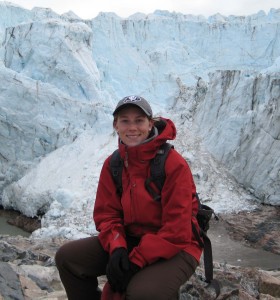
This picture of Earth and the ionosphere, taken with a handheld camera by an astronaut on the International Space Station, shows a bright red wall of plasma near the equator. The glowing red in the image is ionospheric plasma, not the aurora.
Dr. Greer currently works on several projects.
(1) The Global-scale Observations of the Limb and Disk, or GOLD mission. It is a NASA mission of opportunity that measures densities and temperatures in Earth’s thermosphere and ionosphere. GOLD makes these measurements, in unprecedented detail, with an ultraviolet (UV) imaging spectrograph on a geostationary satellite. It launched on 25 January 2018. The goal of the investigation is to provide answers to key elements of an overarching question for Heliophysics science: What is the global-scale response of the thermosphere and ionosphere to forcing in the integrated Sun-Earth system?
(2) The Occultation Wave Limb Sounder (OWLS) instrument is planned for the InspireSat III mission (launch 2024). It seeks to answer the question of what the impact of propagating and breaking gravity waves have on the bulk temperature of the thermosphere. The remote sensing instrument observes solar occultations in the Far-UV to derive profiles of thermospheric composition and temperature.
(3) Using data from the GOLD and ICON missions, this project seeks to understand the influences of dynamics and chemistry on the longitudinal variation of composition in the lower thermosphere.
If you are interested in GOLD data and usage, please see this short video that Dr. Greer recently gave as an introduction to this instrument.
Dr. Greer’s research interest are
